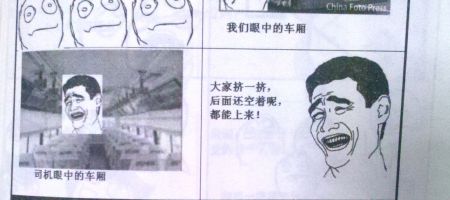Journey to the North
When we crossed into China, it was quite a shock to see how different, how civilized and clean it is compared to Laos. Suddenly, villages along the roads no more consisted of scattered thatched bamboo homes on clearings of otherwise untouched jungle. Instead, we saw solid brick and concrete apartment buildings in even the smallest villages. Most land visible from the roads was cultivated and if not, consisted of shrubbery or at most secondary forest.
And, construction sites everywhere: Not only in the villages and towns. Modern motorways were being constructed with uncountable bridges over the valleys and tunnels into the mountains.1
The journey to Yuanyang was quite off the beaten path: First of all, the Chinese-Lao border is not really frequented that much (yet, see footnote); then, we chose to travel through the mountains in the southern border region stopping in Mengla, Lvchun and Nansha. Most people use the highway from Jinghong to Kunming.
So, nothing in the region appears in any travel guide I know of. It took us almost three days of bus travel through this region of Yunnan on partly bloodcurdling serpentine roads to reach Yuanyang from Luang Namtha in Laos. Bloodcurling were not only the roads but also the overtaking manoeuvres of the bus drivers into curves on roads that were barely broad enough to allow two buses to pass each other comfortably.
But, we survived. And, the journey gave us a funny insight about this part of Chinese culture. A topic I seem to be very fond of, looking at the many articles I wrote already about public transportation.
In the bigger buses that featured a DVD player, our rides were riddled by various Chinese TV series marathons. The worst being some military-themed soap opera with annoying young women as main characters.
Also, the people that live in this region seem to have a weak stomach. For the most part, the roads were not that bad, still, I think we were in no bus in which not at least one person had to vomit.
Concerning the other end, the roadside toilets at the villages were also quite the sight. After some more surveying, I can say that the public toilets in Yunnan are the worst so far I’ve seen in South East Asia. Those roadside toilets, those that were still standing or not being used as a storage house, were small concrete boxes that looked and smelled like converted pig stables. Often, the ground was already covered in leaves and dirt. There were no cabins, instead people would relieve themselves into a gutter ditch next to each other. This lack of privacy while doing your business seems to be something the people don’t care that much in Yunnan because even if there are cabins in public toilets, often either the door is missing or the lock is broken.
Really, a simple hole in the floor of an otherwise empty room seemed to be a luxury compared to these toilets. ;-) (No toilet paper and no soap is standard, nothing I’d notice anymore.)
When we got back to Thailand, Lena made a comment about that “one can see by looking at the row of women at the lavatory putting on new thick layer of makeup that one is in Thailand. While in China, the women are more like ‘eww gross, lets get out of this place fast!’”
Our bus driver also had a retractable tin bong which he popped out on every occasion to smoke, as did half of the male passengers (without bong though). China is one of the few regions left of the world where everybody smokes, inclusively in public places and on buses.
Like for breweries in south Germany, every larger town in Yunnan seems to have a cigarette factory – sometimes recognizable through their cigarette-shaped main building.
Apparently, the bus drivers are only allowed to load up a certain amount of people into their bus – as many as there are seats. The maximum load is controlled in the cities by the police and at the bus station. So, what do the bus drivers do?
What they do is to load up this many people at the bus station, drive out of town, pick up some stools at a friend’s house to put into the gangway and suddenly there is enough place for at least 10 more people. The money paid by the extra passengers presumably goes directly to the bus driver. That pays off.
Since every bus driver does it, I think they even warn each other of police cars being around with a sign language when passing each other. When a police car approaches the driver tells the extra passengers to duck so that they won’t be seen.
Incidentally I bought a comic book named “Rage comics” in a bookstore in Kunming. It just includes Chinese rage comics copied together from the internets. Very rough translation of this one:
1. While getting on the bus
2. From the viewpoint of the passengers
3. From the viewpoint of the bus driver
4. “Come all in, there is space left in the back!”
In the next article: Our destination, Xinjie. Or, why it was worth the trip.
1 China and ASEAN have big plans in that region. Together, they are building international highways and railways that connect China with the ASEAN nations over land. This is an enormous undertaking as the region is a mountain range. And as Laos has no money for that, I heard that Chinese businessmen are building them with a similar banana-deal as when the railway was constructed for Costa Rica back then (See history of Chiquita).

<< Adventures of Longleg - Part I: Slash and Burn Dusk Illusory Image >>
